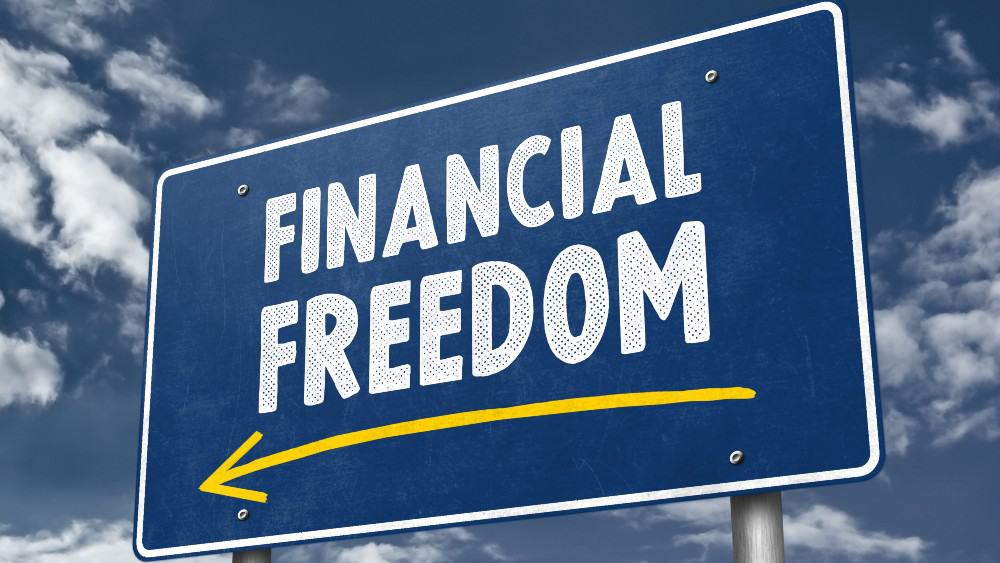According to a national survey conducted in the United States, about one in four of the participants reported experiencing a midlife crisis. Often, the crisis is triggered by life-changing events like divorce, job loss, loss of a loved one, or relocation.
While midlife is often defined as age in the 40s, most survey participants reported that their mid-life crisis occurred before age 40 or after 50.
Yet, another Canadian study indicates that the midlife crisis could be a myth. The study found happiness in its study groups rises from the teens to early 40s.
In any case, having a more secure financial future should help you maintain happiness no matter what.
Here’s how to achieve financial freedom by 40.
Save regularly
Saving regularly means you’ll always spend less than you earn. The earlier you start saving, the sooner your money starts working hard for you. If you’re able to save from every paycheque, your savings will add up to a hefty sum sooner than you think.
For example, some people start working part-time when they’re in high school. Those early savings have many years to grow, and the compounding interest can be substantial over time.
Unfortunately, today’s interest rates are super low compared to history. Thankfully, there are higher-return investment options to help you achieve financial freedom early.
Invest your savings in dividend stocks
The best GIC rates are going for 1.4% and 1.8%, respectively, for the one- and five-year terms. The terms with in-between holding periods have in-between rates in that range.
You can get higher income from dividend stocks. For example, you can get yields of 4.6%, 4.7%, and 7.4%, respectively, from CIBC, Emera, and Enbridge right now.
By starting your investing journey on day one in proven income-focused dividend-growth stocks, you can more easily track your progress to financial freedom.
An equal-weight portfolio in the three equates to a yield of 5.57%. An initial investment of $1,000 each in the stocks will generate an annual passive income of close to $167. It doesn’t seem like a lot in the beginning but believe that the income will grow if you keep saving and investing.
Assuming you keep saving and investing $3,000 a year (or $250 a month) on a 5.57% yield, your portfolio grows by 5% a year, and you reinvest all your dividends, your investment portfolio will grow to $559,925 in 25 years.
According to this setup, by year 13, the dividends produced from the investment portfolio will exceed $3,000! That means the portfolio would help to more than double your annual contributions going forward.
The more likely scenario is that you’ll be able to save and invest more than $250 a month as you advance in your career. Any extra savings that you put into your investment portfolio will only advance your date of financial freedom!
Invest for total returns
Some more savvy investors have opted to invest a portion of their wealth in high-growth stocks, aiming for extraordinary total returns.
Indeed, many wonderful businesses, such as Alphabet, Amazon, and Facebook, don’t pay dividends. However, they tend to outperform juicy-yield dividend stocks in the long run.
Here are the total returns of the stocks mentioned over the past 10 years.
Total Return Level data by YCharts.
This part of the portfolio can deliver annualized returns of 10-20% over the next five years versus returns of about 7-10% from the previous group of dividend stocks.
Eventually, you’ll need to convert these growth stocks to income investments for the financial freedom goal.
The Foolish takeaway
We can’t necessarily control how much we earn from our jobs, but we can control how much we spend and ultimately save. To achieve financial freedom, save and invest regularly.
Solid dividend stocks like the banks and utilities are great places to start. Over time, you might diversify into growth stocks as you broaden your investing knowledge and deepen your investment experience.
Ultimately, you’ll have achieved financial freedom by being able to generate sufficient passive income to cover your living expenses.










